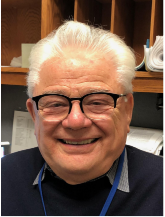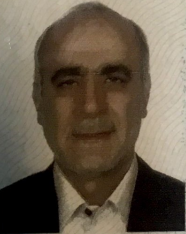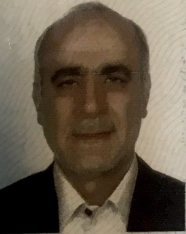Day 1 :
Keynote Forum
Steven J Soldin
Steven Soldin, National Institutes of Health, USA
Keynote: The role of mass spectrometry in improving the diagnosis and treatment of patients with thyroid diseases
Time : 10:05 - 10:50

Biography:
Steven J Soldin earned his Honors degree in Chemistry at the University of Witwatersrand in South Africa where he subsequently received his Master’s degree in Organic Chemistry, and also his PhD in Biochemistry. He enrolled and obtained his Boards in Clinical Chemistry at the University of Toronto. In 1988, he accepted the position of Director of Clinical Chemistry at Children's National Medical Center in Washington, DC. As he was developing his mass spec work, he moved to the Clinical Research Center at Georgetown University as Director of their Mass Spectrometry Core facility, where he still serves as Adjunct Professor in the Department of Endocrinology and Metabolism. Starting 2011, he became a full time Senior Scientist at the Department of Laboratory Medicine, National Institutes of Health, USA, where he additionally holds the position of a Deputy Director of Chemistry and Director of Post-doctoral training program and the laboratory mass spectrometry facility
Abstract:
Statement of the Problem: Patients diagnosed with hypothyroidism (20 million in USA) are usually treated with T4 monotherapy (90% are female). Despite treatment with T4 monotherapy and immunoassay measurement of TSH, FT4, FT3, T4, and T3 all being normal, approximately 50% of these patients claim they still have symptoms of hypothyroidism.
Methodology & Mass Spectrometry Studies: The same samples when analyzed by mass spectrometric methods frequently reveal that T3 and FT3 are low and occasionally that FT4 and T4 are low as well. Adjustment of dosages of T3 and T4 almost always corrects the clinical problem.
Conclusion & Significance: Current immunoassays for thyroid hormones are unreliable at low concentrations and correct diagnosis and treatment of hypothyroidism requires measurement by LC-MS/MS with appropriate dosage adjustments.
Keynote Forum
Shaorong Liu
Shaorong Liu, University of Oklahoma, USA
Keynote: NARROW OPEN TUBULAR LIQUID CHROMATOGRAPHY (NOTLC): A NEW PARADIGM FOR ULTRA-HIGH-RESOLUTION AND ULTRA-FAST SEPARATION
Time : 10:50 - 11:35

Biography:
Shaorong Liu, Director of the Center for Bioanalysis and Professor in the Department of Chemistry and Biochemistry at University of Oklahoma in Norman, Oklahoma, USA. Dr. Liu’s group is focused on developing enabling technologies for biotech research, and more specifically miniaturized analytical systems for ultra-high speed and ultra-high resolution separations of biomolecules. The miniaturized systems include capillary-based apparatus, microchip-based devices instruments and capillary-microchip hybrid devices, while the biomolecules consist of DNA, protein, peptides, steroids and other small molecules. Recently in Dr. Liu’s lab, they have demonstrated a record-high resolution for separating an enzyme-digested E. coli lysate and obtained a peak capacity of close to 1800 in 3-h gradient time using a narrow open tubular (NOT) column. Using a short NOT column, they have also demonstrated sub-second separation of 6 amino acids; all six amino acids were resolved within less than 500 milliseconds. He is the author of more than 120 scientific papers, and inventor of seven patents.
Abstract:
Abstract. In this work, we demonstrate narrow open tubular liquid chromatography (NOTLC) for ultra-high efficiency and ultra-fast separations. Theoretical studies has predicted that open-tubular columns would offer the best means of achieving high separation efficiencies for liquid chromatography and that the optimal i.d. of the open tubular column would be in the range of 1 to 2 um. However, NOTLC has never been systematically tested using columns in this i.d. regime due to the intrinsic challenges of utilizing such narrow columns, and high-efficiency NOTLC has remained only an idea for decades. Here we use 2-um-i.d. capillaries and obtain ultra-high efficiency and ultra-fast results for amino acid and peptide separations.
The narrow open tubular (NOT) column was coated with trimethoxy(octadecyl)silane (C18). An Agilent 1200 HPLC pump coupled with a flow splitter served as a gradient pump. A 6-port valve was used for sample injection. A laser-induced fluorescence (LIF) detector was employed to monitor the separation process. Fig. 1A presents the results for amino acid separation; an expanded view is shown in the inset for clear presentation. Many of the peaks have full widths at half maxima (FWHM) of 0.3-0.5 s. Because of the use of a highly mass-permissive open-tubular column, the elution pressure was low (600 psi) and the separation was complete with 6 min. Fig. 1B presents a chromatogram for separating trypsin-digested cytochrome C and we estimated a peak capacity of 810 within 54 min. Fig. 2C presents a separation of pepsin/trypsin digested E. coli lysate, and we estimated a peak capacity of 1870 within 174 min. Fig. 2D presents six fast NOTLC separations. Under an elution pressure of ~3000 psi, the separation was complete within ~1.3 s (see chromatogram I) and all six amino acids were resolved within 300 ms. The above efficiency, peak capacity, and separation speed are all extraordinary or record numbers
Keynote Forum
Steven J Soldin
Steven J Soldin National Institutes of Health USA, USA
Keynote: The role of mass spectrometry in improving the diagnosis and treatment of patients with adrenal diseases
Time : 11:50 - 12:20

Biography:
Steven J Soldin earned his Honors degree in Chemistry at the University of Witwatersrand in South Africa where he subsequently received his Master’s degree in Organic Chemistry, and also his PhD in Biochemistry. He enrolled and obtained his Boards in Clinical Chemistry at the University of Toronto. In 1988, he accepted the position of Director of Clinical Chemistry at Children's National Medical Center in Washington, DC. As he was developing his mass spec work, he moved to the Clinical Research Center at Georgetown University as Director of their Mass Spectrometry Core facility, where he still serves as Adjunct Professor in the Department of Endocrinology and Metabolism. Starting 2011, he became a full time Senior Scientist at the Department of Laboratory Medicine, National Institutes of Health, USA, where he additionally holds the position of a Deputy Director of Chemistry and Director of Post-doctoral training program and the laboratory mass spectrometry facility.
Abstract:
A state-of-the-art isotope dilution LC-MS/MS method was developed for the simultaneous measurement of nine steroids. Diurnal reference intervals were determined and published. The method was then employed to assess patients with different forms of adrenal disease. We found that after ACTH stimulation the two best markers of adrenal reserve were 11-DOC and corticosterone. Studies are currently underway further validating this statement. Cortisol should no longer be regarded as the most reliable test to perform after ACTH stimulation of the adrenals. Our studies with the new markers reveal a possible prior misclassification rate of 20%.
Keynote Forum
Seyed Jamaleddin Shahtaheri
Seyed Jamaleddin Shahtaheri, Tehran University of Medical Sciences, Iran
Keynote: Title: Synthesis of a molecular imprinted polymer as an absorbent for selective extraction of a triazine herbicide from biological samples
Time : 12:20 - 12:50

Biography:
Steven J Soldin earned his Honors degree in Chemistry at the University of Witwatersrand in South Africa where he subsequently received his Master’s degree in Organic Chemistry, and also his PhD in Biochemistry. He enrolled and obtained his Boards in Clinical Chemistry at the University of Toronto. In 1988, he accepted the position of Director of Clinical Chemistry at Children's National Medical Center in Washington, DC. As he was developing his mass spec work, he moved to the Clinical Research Center at Georgetown University as Director of their Mass Spectrometry Core facility, where he still serves as Adjunct Professor in the Department of Endocrinology and Metabolism. Starting 2011, he became a full time Senior Scientist at the Department of Laboratory Medicine, National Institutes of Health, USA, where he additionally holds the position of a Deputy Director of Chemistry and Director of Post-doctoral training program and the laboratory mass spectrometry facility.
Abstract:
Statement of the Problem: Patients diagnosed with hypothyroidism (20 million in USA) are usually treated with T4 monotherapy (90% are female). Despite treatment with T4 monotherapy and immunoassay measurement of TSH, FT4, FT3, T4, and T3 all being normal, approximately 50% of these patients claim they still have symptoms of hypothyroidism.
Methodology & Mass Spectrometry Studies: The same samples when analyzed by mass spectrometric methods frequently reveal that T3 and FT3 are low and occasionally that FT4 and T4 are low as well. Adjustment of dosages of T3 and T4 almost always corrects the clinical problem.
Conclusion & Significance: Current immunoassays for thyroid hormones are unreliable at low concentrations and correct diagnosis and treatment of hypothyroidism requires measurement by LC-MS/MS with appropriate dosage adjustments.
Keynote Forum
Marie-Lise Colsoul
Marie-Lise Colsoul, Remi Shair and Laurence Galanti CHU UCL Namur, Avenue Dr G., Belgium
Keynote: UHPLC method development for the quantification of ropivacaine, adrenaline and clonidine in an anesthetic infusion
Time : 13:50 - 14:20

Biography:
Marie-Lise Colsoul is graduated from the University of Louvain-la-Neuve as a Bioengineer. She is In-charge of the Development Department in the Chemistry Laboratory of the CHU UCL Namur hospital. She is involved in the Drug Stability Research Group (DSRG) which is a partnership between the hospital pharmacy, laboratory and scientific support unit to assess physical and chemical drugs stabilities
Abstract:
A mixture of ropivacaine (5000 µg/ml), adrenaline tartrate (5 µg/ml) and clonidine (3.75 µg/ml) is commonly used in operating room for locoregional anesthesia. In order to assess the chemical stability of this infusion, an ultra-high-performance liquid chromatography (UHPLC) method was developed. The challenge of this development was to find a method allowing the three molecules quantification despite their important differences of both concentration and hydrophobicity. A reversed-phase column for polar compounds retention (ACQUITY UPLC HSS T3 1.8µm 2.1X150mm, Waters) was used: it was required for adrenaline (log P: -0.43) retention and it was also suitable for ropivacaine (log P: 4.07) and clonidine (log P: 2.49). A gradient separation was carried out with KH2PO4 25 mM pH 2.5 and acetonitrile. The run started with 2% of organic content for 1.7 minutes before being increased to 25% during 6.3 minutes. Re-equilibrating went on for two minutes. The column temperature was 30°C and the flow rate 0.4 ml/min. Due to the important difference of molecules concentrations, samples were injected times: a first time 0.1 µl to detect ropivacaine and the second time 3 µl to detect adrenaline and clonidine. Elution times were 5.6, 1.3 and 4.0 min respectively. The detections were performed with a photodiode array detector at 220 nm for ropivacaine and clonidine and at 280 nm for adrenaline. These wavelengths do not correspond to absorption maxima but they were chosen to avoid phosphate buffer and acetonitrile interferences. Finally, this method allows the quantifications of the three infusion components.
Keynote Forum
Seyed Jamaleddin Shahtaheri
Tehran University of Medical Sciences, Iran
Keynote: Optimization of liquid-liquid micro-extraction technique for trace determination of pesticide diazinon before HPLC analysis
Time : 14:20 - 14:50

Biography:
Steven J Soldin earned his Honors degree in Chemistry at the University of Witwatersrand in South Africa where he subsequently received his Master’s degree in Organic Chemistry, and also his PhD in Biochemistry. He enrolled and obtained his Boards in Clinical Chemistry at the University of Toronto. In 1988, he accepted the position of Director of Clinical Chemistry at Children's National Medical Center in Washington, DC. As he was developing his mass spec work, he moved to the Clinical Research Center at Georgetown University as Director of their Mass Spectrometry Core facility, where he still serves as Adjunct Professor in the Department of Endocrinology and Metabolism. Starting 2011, he became a full time Senior Scientist at the Department of Laboratory Medicine, National Institutes of Health, USA, where he additionally holds the position of a Deputy Director of Chemistry and Director of Post-doctoral training program and the laboratory mass spectrometry facility.
Abstract:
A state-of-the-art isotope dilution LC-MS/MS method was developed for the simultaneous measurement of nine steroids. Diurnal reference intervals were determined and published. The method was then employed to assess patients with different forms of adrenal disease. We found that after ACTH stimulation the two best markers of adrenal reserve were 11-DOC and corticosterone. Studies are currently underway further validating this statement. Cortisol should no longer be regarded as the most reliable test to perform after ACTH stimulation of the adrenals. Our studies with the new markers reveal a possible prior misclassification rate of 20%.
Keynote Forum
Tariq M Aljarba
UCL School of Pharmacy, UK
Keynote: Multidrug-efflux pumps inhibitors study on selected medicinal plants
Time : 15:20 - 15:50

Biography:
Abstract:
Background: Multidrug-resistance among bacteria has become a global issue, bacteria resistance occurs as a result of mutations in bacterial genes or the acquisition of resistance determinants borne on plasmids, bacteriophages, transposons and/or by the action of multidrug-efflux pumps. These pumps work to remove a variation of structurally irrelevant antibiotics from the microorganism resulting in reduced susceptibility of the antibiotic; Staphylococcus aureus, Escherichia coli and Pseudomonas aeruginosa are an example of these expel mechanism. This focus the urgency for new antibiotics or the potentiation of existing antibiotics by inhibiting bacterial efflux pumps. This study inspects natural products for their in vitro antibiotic potentiation against S. aureus strains reveal distinct efflux-related multidrug-resistance pumps.
Methods: Quercus robur, Fraxinus excelsior, Fagus sylvatica, Ulmus minor, Robinia pseudoacacia, Baptisia tinctoria and Frangula alnus. Hexane, chloroform, methanol and aqueous extracts and fractions of each of the samples were investigated for their antibiotic potentiation activity, were screened against effluxing strains of S. aureus using a modulation assay. These strains included SA1199B (fluoroquinolone-resistant; NorA), RN4220 (macrolide-resistant; MsrA) and XU212 (tetracycline-resistant; TetK). Extracts and fractions were collected using Soxhlet, ultrasound-assisted and solid phase extraction.
Results: The results show that the chloroform extract of Baptisia tinctoria and Robinia pseudoacacia 3 has the highest antibiotic potentiation activity against all S. aureus effluxing strains tested. They also enhanced the activity of norfloxacin against SA1199B by a 256-fold reduction in concentration. The chloroform extract of Baptisia tinctoria enhanced the activity of erythromycin against RN4220 by 128-fold reduction. Where are the chloroform extract of Robinia pseudoacacia 3 enhanced the activity of erythromycin against RN4220 by an eight-fold reduction in the concentration of erythromycin needed to inhibit the bacterial growth, also it enhanced the activity of tetracycline and norfloxacin by an eight-fold.
Conclusions: Several of the extracts and fractions had observable potentiation activity.
Keynote Forum
DeMing Song
Clinical Research Associate
Keynote: THE APPLICATION OF TWO DIMENSIONAL HPLC IN LIQUID CHROMATOGRAPHY-MASS SPECTROMETER WITH PARTICLE BEAM INTERFACE

Biography:
Abstract:
The use of particle beam interface (PBI) in LC-MS has faded because of its poor resolutions and low sensitivity for a lot of compounds. It also does not perform well in reversed phase systems with a high percentage of water.
This manuscript describes the method of two dimensional LC to overcome the problems of PBI, both in the identification of unknown samples and in the quantitative determination of metabolites of vitamin-D in human plasma. In the identification of unknown components, the reverse phase solvent in first dimensional liquid chromatography (LC) was transferred to an isocratic normal solvent system in second dimensional LC by a column switch. Moreover, only peaks of interest (components) in the first dimensional LC were transferred into the second LC column for mass analysis. In the second dimensional LC for the quantitative determination of the metabolite of vitamin-D, the peak width of analyte was greatly narrowed and interference was excluded such that high sensitivity and resolution resulted.. The detection limit can reach to 25 pg./ml for test metabolite of vitamin D in human plasma with injection volume 50 µI.
- Applications of Chromatography
Session Introduction
Tariq M Aljarba
UCL School of Pharmacy, UK
Title: Multidrug-efflux pumps inhibitors study on selected medicinal plants

Biography:
Abstract:
Multidrug-resistance among bacteria has become a global issue, bacteria resistance occurs as a result of mutations in bacterial genes or the acquisition of resistance determinants borne on plasmids, bacteriophages, transposons and/or by the action of multidrug-efflux pumps. These pumps work to remove a variation of structurally irrelevant antibiotics from the microorganism resulting in reduced susceptibility of the antibiotic; Staphylococcus aureus, Escherichia coli and Pseudomonas aeruginosa are an example of these expel mechanism. This focus the urgency for new antibiotics or the potentiation of existing antibiotics by inhibiting bacterial efflux pumps. This study inspects natural products for their in vitro antibiotic potentiation against S. aureus strains reveal distinct efflux-related multidrug-resistance pumps.
Methods: Quercus robur, Fraxinus excelsior, Fagus sylvatica, Ulmus minor, Robinia pseudoacacia, Baptisia tinctoria and Frangula alnus. Hexane, chloroform, methanol and aqueous extracts and fractions of each of the samples were investigated for their antibiotic potentiation activity, were screened against effluxing strains of S. aureus using a modulation assay. These strains included SA1199B (fluoroquinolone-resistant; NorA), RN4220 (macrolide-resistant; MsrA) and XU212 (tetracycline-resistant; TetK). Extracts and fractions were collected using Soxhlet, ultrasound-assisted and solid phase extraction.
Results: The results show that the chloroform extract of Baptisia tinctoria and Robinia pseudoacacia 3 has the highest antibiotic potentiation activity against all S. aureus effluxing strains tested. They also enhanced the activity of norfloxacin against SA1199B by a 256-fold reduction in concentration. The chloroform extract of Baptisia tinctoria enhanced the activity of erythromycin against RN4220 by 128-fold reduction. Where are the chloroform extract of Robinia pseudoacacia 3 enhanced the activity of erythromycin against RN4220 by an eight-fold reduction in the concentration of erythromycin needed to inhibit the bacterial growth, also it enhanced the activity of tetracycline and norfloxacin by an eight-fold.
Conclusions: Several of the extracts and fractions had observable potentiation activity.
